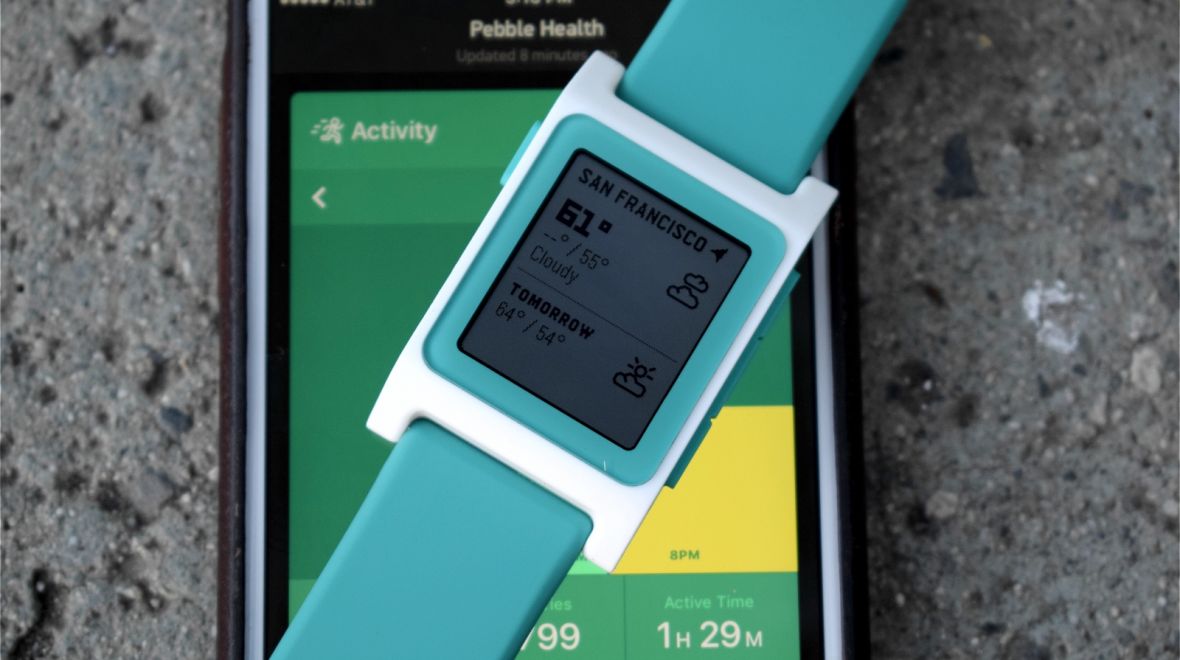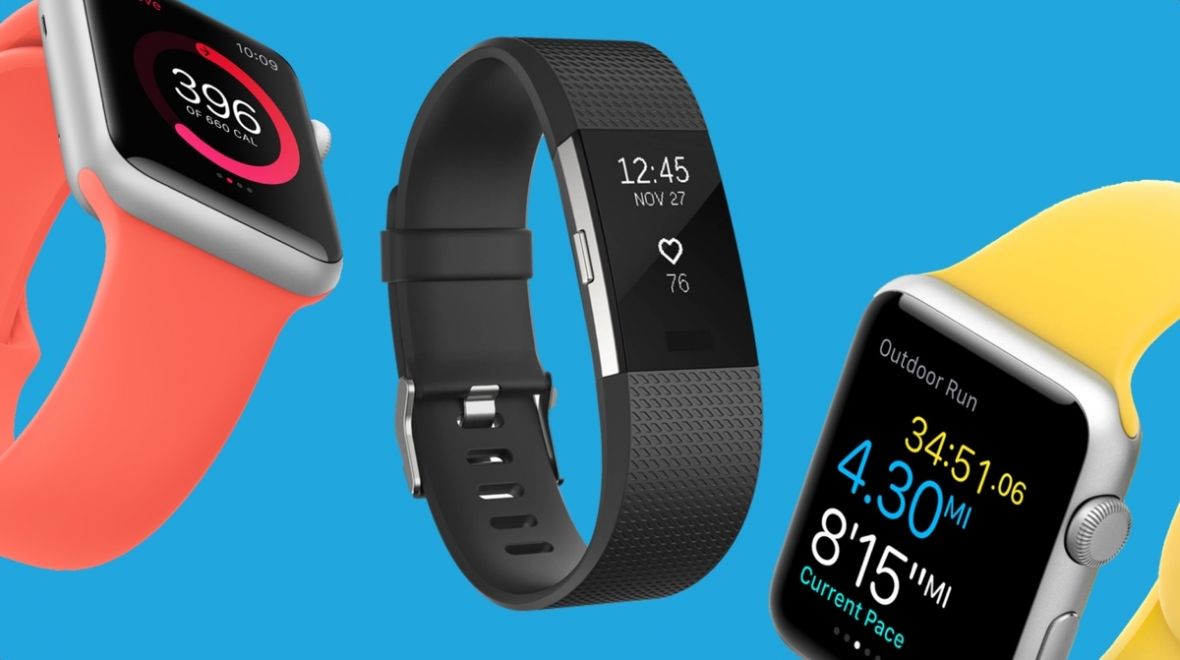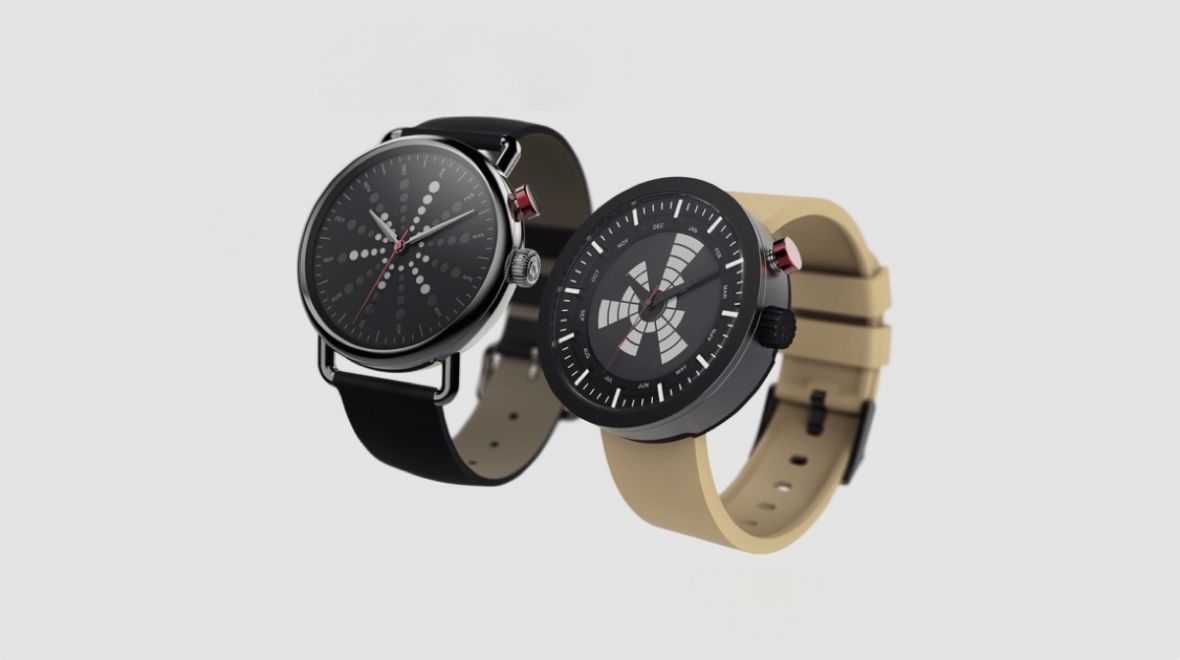With Android Wear 2.0 out of the gate and the Apple Watch now sporting the third iteration of its software, soon to be fourth, the battle for smartwatch supremacy is closer than ever.
Like the smartphone war that still wages, the differences go beyond just price and looks – it’s ideological. Apple’s singular experience versus the choice and variety offered by Android Wear; Apple’s huge fanbase and army of devoted developers and accessory makers against Google’s mighty partners and powerful platform.
Read this: The best Android Wear smartwatches
As with smartphones, Google provides its software to a whole host of hardware partners, whereas Apple takes care of the hardware design as well as the on-board OS. That means comparing Apple Watch with Android Wear involves grouping together a whole host of devices on the Google side.
Then there’s compatibility. The Apple Watch only works with the iPhone whereas Android Wear pairs with both Android and iPhone – and gives iOS users an even better experience in Wear 2.0.
Having spent time in both camps, we’re pulling together a comprehensive comparison of the two so you can decide which – Apple Watch or Android Wear – is the one for you.
Apple Watch v Android Wear: Design
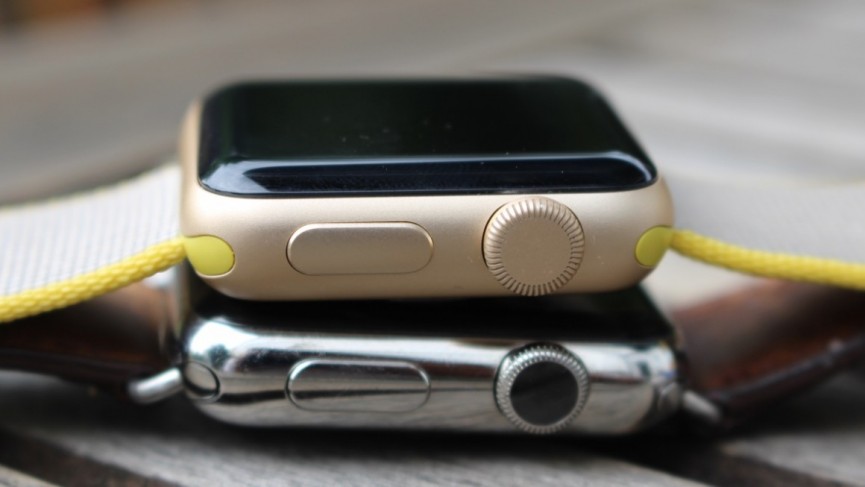
Apple Watch continues to aim for the luxury market, but with Series 2 Apple has steered its wearables ship a few more degrees towards fitness. There’s a choice of four models across two sizes – 38mm and 42mm – and with dozens of straps, meaning how high-end you go just depends on your budget.
You have the aluminium Watch Sport; the stainless steel Watch; the aluminium Apple Watch Nike+; and the ceramic white Edition, which replaces the 18k gold model. You also have Apple Watch Series 1, which is a refreshed model of the original that gives it a few internal enhancements, but this one’s only available in aluminium.
Read this: The best smartwatch 2017
The basic design is constant through all the models, and all of them are compatible with any Apple Watch strap, of which there are many. Classic link bracelet, rubber sport band, leather loop, classic buckle, modern buckle, Milanese loop – the decision is yours. Third-party strap makers including designer names such as Hermès have added their designs into the mix.
The digital crown on the side of the device is a nice touch too, allowing you to scroll and zoom without having to obscure the screen. Perhaps the only criticism you can give the design is that it’s square, which may not be for some people.
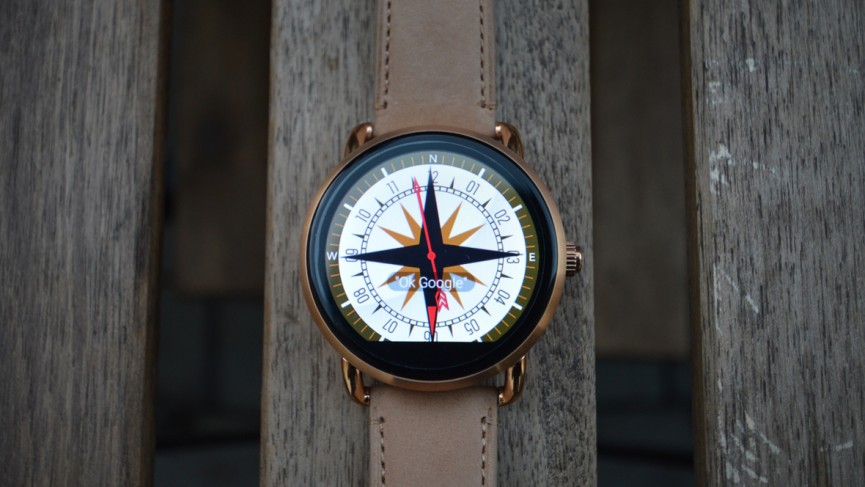
As we’ve said, there are many different devices to consider on the Android Wear side. While the first Wear watches were rather chunky and unappealing, newer arrivals like the Huawei Watch 2 and Asus ZenWatch 3 show manufacturers are now taking more care over the design process. The LG Watch Sport and LG Watch Style are good looking too, although the former is a little chunky.
The Tag Heuer Connected Modular 45, an Android Wear contender, is another really stylish and well-built device, and the options don’t stop there.
You also need to decide if you want rectangular or a circular face, a choice you don’t get with the Apple Watch. Most of the Android Wear watches coming out right now have circular faces, and Google’s software can run perfectly well on both screen shapes, give or take a tiny bit of cut off text.
Essential reading: The best smartwatches for women
And while, again, configuration options depend on what you’ve gone for, Android Wear devices typically offer more support for replacement straps than the Apple Watch does. In fact, many will fit any watch band of a certain width.
Both the Apple Watch and Android Wear devices give you the option to pick a wearable design that works for you, but it’s the Google-powered watches that offer most in the way of customisation and overall appearance options. Now, with the Polar M600, Fossil Q x Cory Richards and Nixon The Mission, there really is an Android Wear watch for everyone.
Apple Watch v Android Wear: Screen and battery life
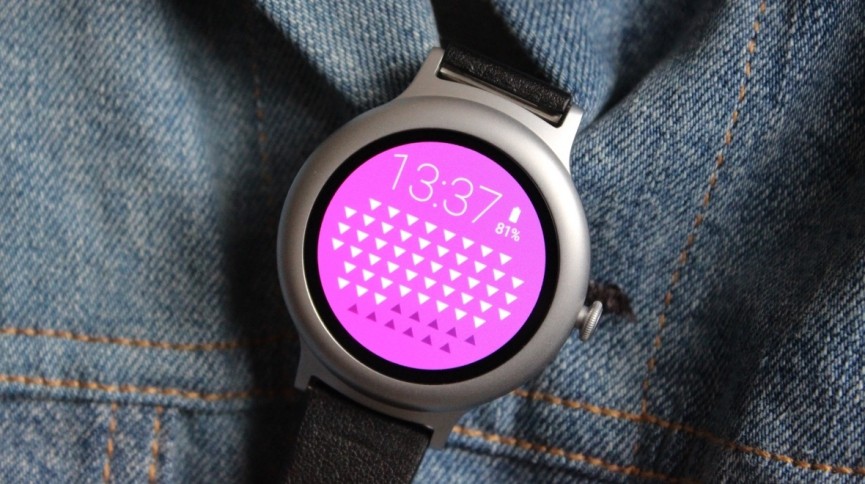
Android Wear screens come in various shapes and sizes, even from inside the same company. Designers have learned that not everyone has massive wrists, but at the same time they’re trying to cram more tech inside – so sometimes it feels like we’re still breaking even in the size department. But while Nixon The Mission tops out the chunkier end of the scale, you’ve got options like the Asus ZenWatch 3, the Michael Kors Access and Moto 360 2 offering more reasonable dimensions. The Huawei Watch 2 has a much more agreeable size to it too.
As for the Apple Watch, there are two screen sizes to pick from: a 38 mm tall model with a 1.5-inch screen and a 42 mm tall variant with a 1.65-inch screen. The dimensions of 272 x 340 pixels (38 mm model) and 312 by 390 pixels (42 mm model) are enough to earn the ‘Retina’ badge Apple applies to some of the other products in its line-up, but take note that Series 2 enhances the brightness up to 1,000 nits, while Series 1 gives you 450.
The Apple Watch screen is absolutely as impressive as you would expect from a company that makes the iPhone, with sharp and bright colours and a special force touch interaction to bring up context-sensitive menus. Even the Series 1, with its lower nit count, is still pleasingly vibrant.
Must have extras: Best Apple Watch accessories
Battery is the Achilles’ heel of most smartwatches, and Apple’s device is no different. We can stretch the Series 2 watch to two days, while the Series 1 is closer to a single day. And if you’re using the GPS on Series 2, expect to reduce that dramatically. Either way, you’re probably going to find yourself charging it each night.
As for Android Wear, there’s not a lot more to shout about. The LG Watch Sport can give you two days if you’re not rinsing the GPS and LTE, while the Style is more like a day. The Huawei Watch 2 sits somewhere in between that.
So, it’s a similar story. Whether you’re opting for Apple or Google, don’t expect more than two days of battery right now.
Apple Watch v Android Wear: Interface
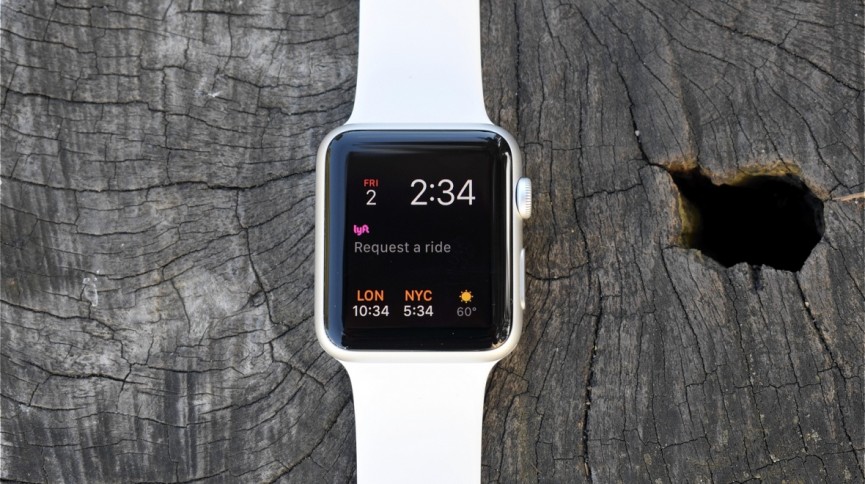
If you’ve used both iOS and Android on smartphones and tablets then you already have a pretty good feel for the Apple Watch and Android Wear aesthetics, although their wearable versions are somewhat different in terms of layout.
The Apple Watch takes a very clean, uncluttered approach, with a circular apps grid that, honestly, you probably won’t dive into when you have instant-loading apps from the dock in watchOS 3. The two physical buttons on the side certainly help when it comes to navigation — tapping on the digital crown, for example, takes you home, and lets you zoom in and out. The other button is a shortcut to the aforementioned dock.
At WWDC 2017 Apple unveiled watchOS 4, which is going to make the Watch even easier to navigate with a vertical scrolling dock and the option to turn the honeycomb app grid into a list view.
Hands on: Apple watchOS 4 review
There are a lot of watch faces to choose from, but unlike Android Wear you’re stuck with the options Jony Ive has selected. At least there are plenty of ways to customise them via complications, which are the small info nuggets that apps can deliver to the face, be it a weather forecast or an event reminder. The faces do expand a tad in watchOS 4, including new Toy Story faces and a Siri face, which provides a continually updating timeline of your calendar and other events it feels are relevant throughout the day.
Android Wear, on the other hand, is completely open to third-party faces, but the options make for a mixed bag, and a lot are pretty dreadful. Android Wear 2.0 is giving this part a big overhaul: you’ll still have access to the catalogue of existing faces but designers can now include complications in their designs, making them more useful. These work similarly to the Apple Watch, although you can have more of them on the screen at once with Android Wear.
Opinion: Android Wear 2.0 has taken a valuable lesson from Apple
The pop-up cards have also gotten smarter. They’re now less intrusive and don’t constantly take up half the screen. This means less swiping and tapping – and an OS overall feels much more intuitive with the update. What’s more, Wear 2.0 adds support for rotational input, and the first LG Watches running Google’s new software have Apple Watch-like crowns that let you scroll and zoom. We expect plenty more of this from other manufacturers.
Google is also bringing support for its Assistant to Wear 2.0, which is a more advanced version of Google Now. It’s smarter and more contextual, making you feel a little less like you’re talking to a robot, but it’s still not perfect and you may find yourself skipping this feature.
Both Apple’s and Google’s platforms make extensive use of voice control in lieu of a touchscreen keyboard, providing a convenient – if not 100% accurate – way of responding to notifications and performing actions on the wearables if you’d prefer. Assistant is smarter than Siri right now, but when it comes to recognising words to reply to messages, both have come a long way.
If you’re thinking of going Google on an older smartwatch, make sure you check here first to make sure it will be getting the Android Wear 2.0 update. If it isn’t going to, we’d advise against it.
Apple Watch v Android Wear: Tracking
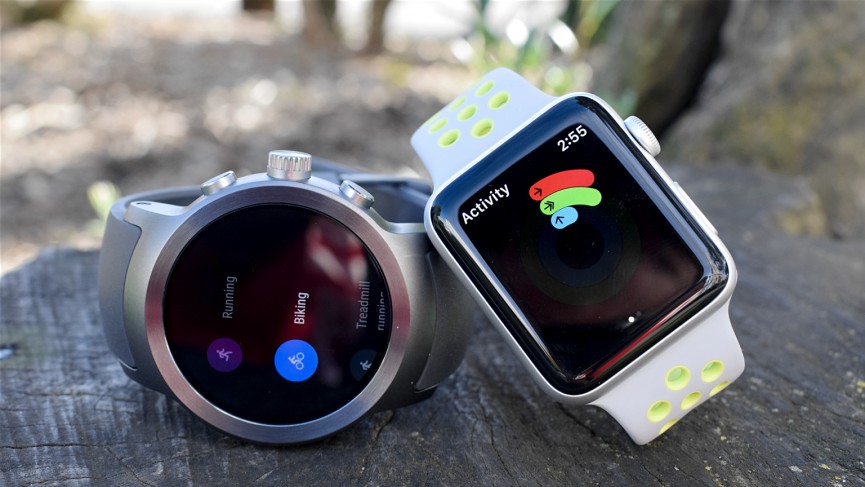
Apple has been eager to underline the health and fitness capabilities of its smartwatch at every available opportunity, and its Activity Rings have become a bit of a platform of their own. As well as the Series 2’s on-board sensors, measuring GPS, heart rate, steps, sleep (with third-party apps) and more, it ties in with the Health app on an attached iPhone.
As features such as Medical ID and ResearchKit show, Apple is serious about health, and with the addition of GPS and waterproofing – for runners and swimmers – the Series 2 is heavily pitched as a fitness device. And beyond Apple’s own tracking, you have the option to load up third-party Apple Watch running apps like Strava and Runkeeper. Just note that the Series 1 lacks both of these features, so its tracking powers are a little more limited. With Series 3/watchOS 4 we’re expecting Apple to push health even further, with things like VO2 Max and GymKit, which will let the Watch sync data with select gym equipment.
Key reading: What your Apple Watch rings say about you
Over on the Android Wear side of the fence, most smartwatches give you step, sleep and heart rate tracking, though it varies between makes and models. Some of the more luxury watches like the Asus ZenWatch 3 don’t even feature a HR tracker. Google Fit comes as standard in Android Wear, and in Wear 2.0 the Fit platform has got better with support for a wide range of gym workouts on top of the usual running and biking.
If you have a GPS-packing smartwatch like the Polar M600 you’ll be better able to take advantage of this, not to mention, again, all the third-party options which become more useful in Wear 2.0. Standalone apps mean you can do a lot more without having your phone nearby.
Apple and Google are quite similar when it comes to what you can track on their platforms, but with Android Wear it’s going to come down to what the hardware itself is capable of.
Apple Watch v Android Wear: Apps
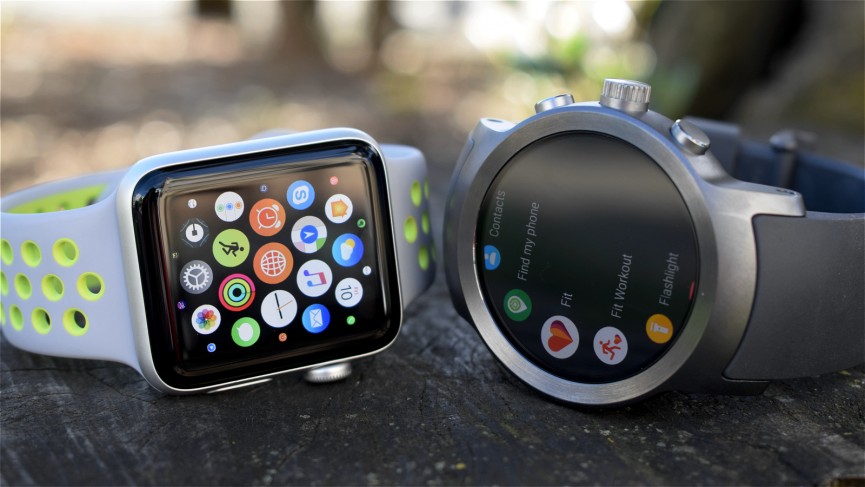
And that brings us neatly on to apps. Apple pioneered the mobile app store concept with the iPhone and of course there are a huge number of companies and developers clamouring to get their goods on the face of the Apple Watch.
Thanks to the prestige that Apple brings with it, people have been building Watch apps to do everything from unlocking your car to tracking your next flight or calling a cab. With more than 10,000 apps for Apple Watch available, you will find a mixture of well-know brands and some interesting indie projects too.
Read now: Best Apple Watch apps | Best Android Wear apps
On both watchOS and Android Wear (post-2.0 update) developers can now build standalone apps for these devices, meaning you need to spend less time with your smartphone diligently tethered.
One of the clever features of Android Wear is the way it supports notifications from any app right out of the box, even if the app in question hasn’t been updated for a long time. Developers can choose to build on top of this basic functionality to provide more interactive elements or even an app that runs solely on the smartwatch itself.
We still want more ‘killer apps’ on both platforms, but with Android Wear 2.0 here we’re seeing a flood of new ones that make Google’s smartwatches stronger. If there are certain apps you think will be your go-tos, it’s worth checking which platforms support them (and how they vary between) before paying out for a flashy new smartwatch.
Apple Watch v Android Wear: Price
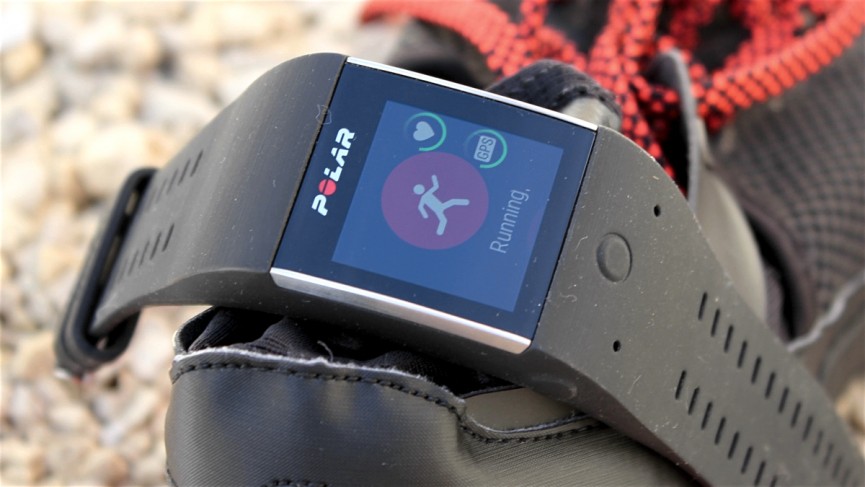
While Apple was once positioned more towards the high-end market, the release of more premium Android Wear devices and more of a push from Apple on its Sport models has seen the two coalesce on the price scale. There are still plenty of expensive options in both camps though.
For example, Apple’s Ceramic Edition Watch comes in at an eye-watering-but-less-ridiculous-than-the-gold $1299 for the 42mm. Meanwhile the Series 2 Sport starts at $269, moving up to at least $549 if you want it in stainless steel.
Of course, if you want to plump for a different/better band, you’re going to be paying more – especially with premium designs like the Milanese loop on offer.
The big reviews
The benefit of partnering with many manufacturers means Android Wear has more appealing options to the budget-conscious, and while some of the best bargains right now can be found in older models, even some of the newer ones come in under Apple’s pricing.
A stainless steel Fossil Q Marshal will cost you $295, while you can get a ZenWatch 3 for $229 and a feature-packed Nixon The Mission for $400 The Tag is the most expensive, of course, starting at $1,650. On the other hand, you can now pick up a Moto 360 Sport for less than $200.
Price is one of the areas where Android Wear has more to offer, but by offering Series 1 alongside its newer model, Apple has found a way to offer something more affordable that doesn’t feel too behind the times.
Apple Watch v Android Wear: Verdict
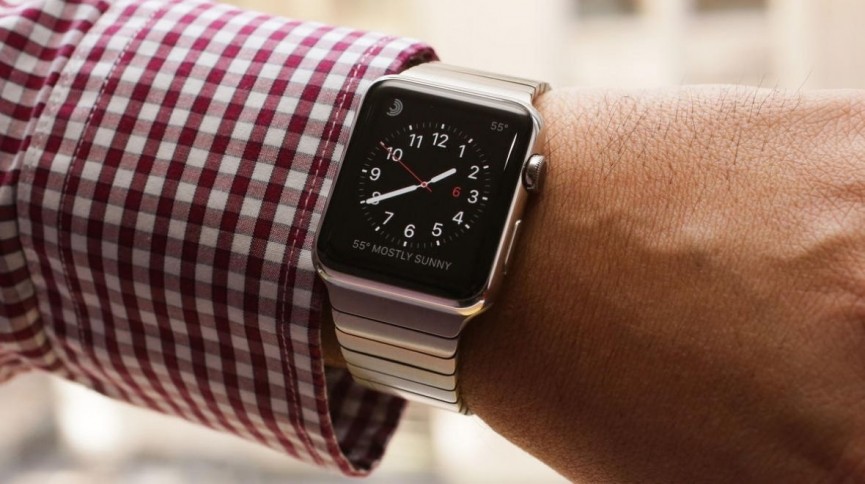
As we mentioned earlier, choosing your smartwatch is going to be largely influenced by what kind of smartphone you’re currently rocking. Less so now that Android Wear works with iPhones but it’s worth pointing out that you can’t get an Apple Watch unless you use iOS. Moreover, if you’re using Android Wear with an iPhone, you’re still not going to get the full experience.
With Apple, the software and hardware have been tightly woven together, and watchOS 3 and 4 it feels like it’s evolved to a point where it feels more intuitive. But Android Wear smartwatches have caught up in the hardware department thanks to better design, with companies like Tag, Fossil and Casio all getting involved. We also think it’s finally snapping at Apple’s heels in the software section, with Android Wear 2.0 offering a significant leap forward from what it was. Plus, you have the benefit of cheaper options.
There was no easy answer when we first put the Apple Watch and Android Wear side by side, and truth be told, that’s still the case. Just keep in mind everything mentioned above and think it over carefully before making your decision.
SOURCE:https://www.wareable.com/smartwatches/android-wear-vs-apple-watch-2015
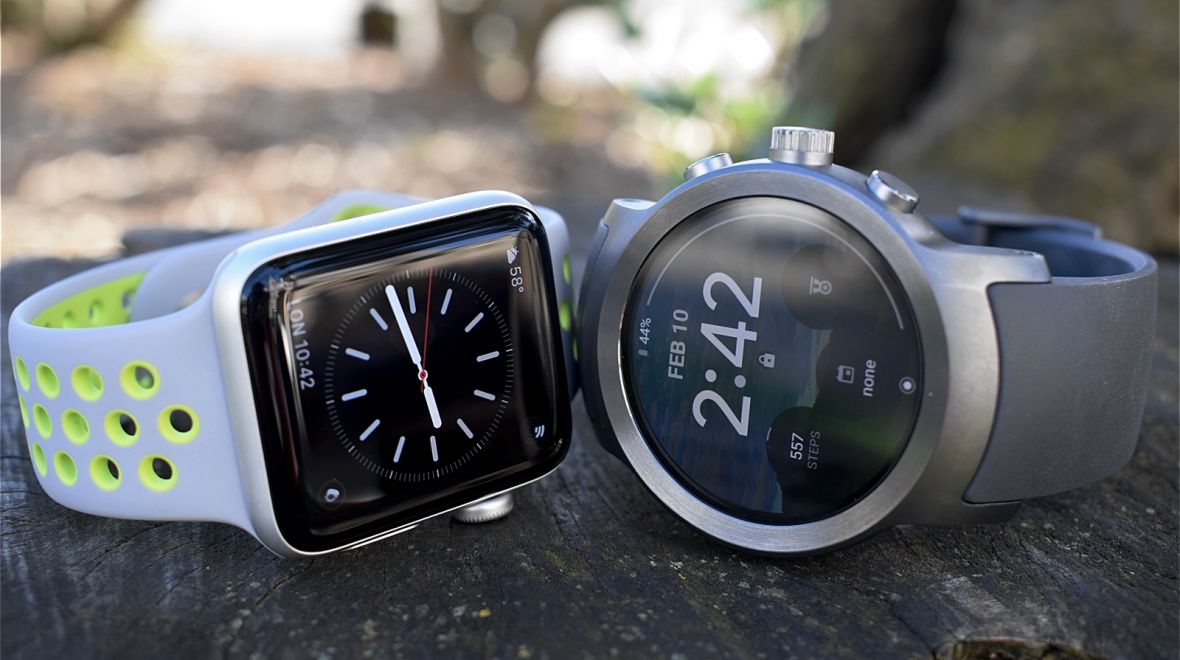
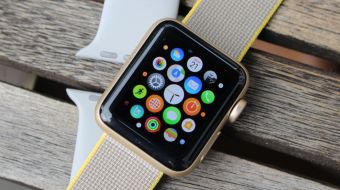 Apple Watch Series 2 reviewApple’s second smartwatch is sportier, but that’s not all there is to like
Apple Watch Series 2 reviewApple’s second smartwatch is sportier, but that’s not all there is to like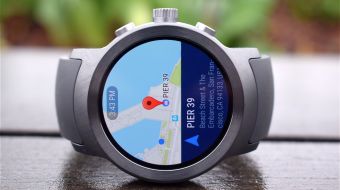 LG Watch Sport reviewA superb model to show off the new Android Wear 2.0
LG Watch Sport reviewA superb model to show off the new Android Wear 2.0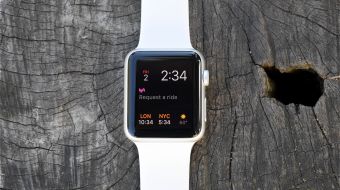 Apple Watch Series 1 reviewBack to the future
Apple Watch Series 1 reviewBack to the future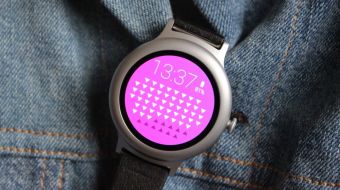 LG Watch Style reviewAn Android Wear 2.0 watch overshadowed by its more feature-packed brethren
LG Watch Style reviewAn Android Wear 2.0 watch overshadowed by its more feature-packed brethren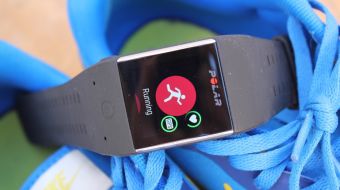 Polar M600 reviewPolar’s first Android Wear smartwatch doesn’t feel like a smartwatch… and that’s good
Polar M600 reviewPolar’s first Android Wear smartwatch doesn’t feel like a smartwatch… and that’s good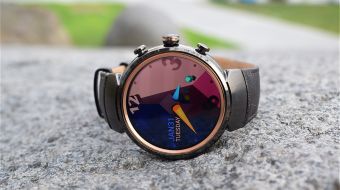 Asus ZenWatch 3 reviewThis will be even better come Android Wear 2.0
Asus ZenWatch 3 reviewThis will be even better come Android Wear 2.0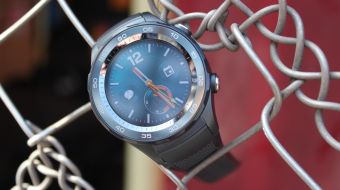 Huawei Watch 2 reviewFitness-obsessed Android Wear watch misses the mark
Huawei Watch 2 reviewFitness-obsessed Android Wear watch misses the mark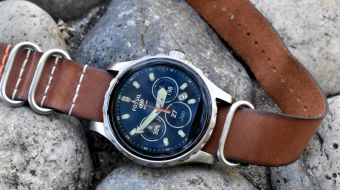 Fossil Q x Cory Richards reviewOne of the best looking Android Wear watches gives you more
Fossil Q x Cory Richards reviewOne of the best looking Android Wear watches gives you more